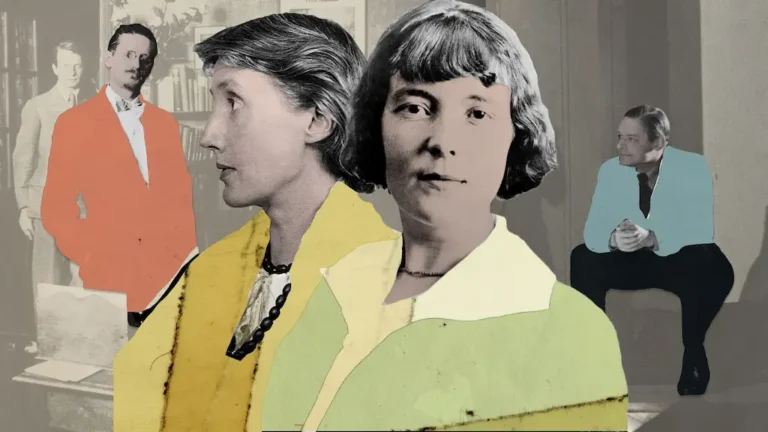The Victorian Period: 1832-1900
The Victorian Period took place during the long reign of Queen Victoria (1837-1901). Great Britain was then the first industrial, cultural and economic nation, with a thriving economy. It was a time of social and political stability and the colonies were a huge market for British products. The British population rose from 2 million people to 6.5 million people. The Great Exhibition of 1851 was a demonstration of British power.
Yet, some social problems arose: trade unions were forbidden and this led to riots. The “Corn Laws” were used to keep the price of bread high. There was pauperism too: in 1864, the Poor Law Amendment Act was introduced to solve the problem of poverty with workhouses.
The Victorian Period was the age of two extremes: the poor working class and the middle classes, rich and comfortable. It was a 2-standard society. It was also an age marked by scientific and economic confidence and social and spiritual pessimism. Some great debates took place: intellectual activity and questioning on varied themes such as justice, liberty and progress. In 1859, Charles Darwin published “On the Origin of Species by Means of Natural Selection”.
The Mid-Victorian society is still held together by Christian moral teachings. The stress was on the virtues of family life. Some saw the family as an agent of oppression, as an efficient means to maintain uniformity in society. It was also the time of the first real moves of the modern women’s movement. Yet, at the same time, there was a great respect for the matronly model provided by Queen Victoria herself: the stereotype of virtuous womanhood.
The 19th Century: the Great Age of the English novel and Gothic novel
With Charles Dickens, a new concern of the society emerged:
- he was a clock (a huge worker)
- his father was imprisoned for debt
- he started working at the factory at 12
Dickens’ life inspired his novels: David Copperfield, Oliver Twist, The Pickwick Papers, and Hard Times. They all revolve around the problems of society and the suffering of children.
He is never pathetic but sometimes humourous and ironic. Dickens’s depiction of the Victorian change of feelings from optimism and confidence at the beginning of Queen Victoria’s reign in 1837 to uncertainty and melancholy thirty years later.
Modernism: 1920-1945
TS Eliot, James Joyce, Joseph Conrad, Virginia Woolf, and Yeats were all modernists. Modernism started after World War One. Modernism happened in France earlier than in Great Britain: from 1890 to 1940. It is a transcontinental movement, to Russia and the USA and multiple as it comprises existentialism and structuralism.
This literature revealed a breaking away from established rules and questioned Man’s position and function in the Universe. Modernist texts tend to be remarkable experiments in style and form.
In the 19th century, everything was rational and logical: setting, time, and characterization, whereas in the 20th century, all is questioned and challenged: the characters are depicted through different techniques. Besides, Sigmund Freud influenced the modernist movement. Modernism mirrors the impact of psychology on literature, with the awareness of the irrational.
This ultimately led to clashes with conventions and the emergence of the stream of consciousness, the presentation of personality. James Joyce went to Paris in 1902 and experimented with the technique: the myths, allusions and paradoxes had the effect of an absence and lack of coherent narrative structure.
In poetry, free verses are insisted on, along with the abolition of meter, with its regular pattern of stresses and length. Poetry remains metrical and musical. In drama, Samuel Beckett wrote “Waiting for Godot” in 1953 which depicts a new abstraction of reality.
Modernism: a heterogeneous group of writers
James Joyce
James Joyce was born in Dublin, Ireland. Jesuits brought him up and was a linguist and a well-read man. He was dissatisfied with the narrow-minded Irish Catholicism and patriotism. He moved to Paris in 1902 and wrote verses using the stream-of-consciousness technique. He wrote poetry – “Chamber Music” in 1907 – and drama and fiction: “Exiles” in 1918, where Stephen Dedalus is one of his central characters. Joyce had conflicting emotions about one’s country and homeland: it was his dilemma and for him, a European exile was the only answer.
“The Dubliners” (1914) is a collection of stories set in Dublin. “A Portrait of the Artist as a Young Man” (1914) is almost an autobiography, with Dedalus as the main character. Joyce published “Ulysses” in 1922, the same year as T.S. Eliot’s “The Wasteland”. It was published in Paris and was controversial: it was not available in the USA before 1933.
The structure of “Ulysses” is based on the “Odyssey” by Homer. Leopold Bloom is presented as a modern Ulysses. Molly Bloom is his Penelope. Dedalus is Ulysses’s lost son. The novel has multiple focuses as Dedalus’s impressions are contrasted with and played against. The story deals with one single day: June 16th 1904.
While writing, Joyce was obliged to flee and run from city to city to avoid the dangers of World War One: there are signs of devastation throughout the book. It is Joyce’s protest against the heroic vision of soldiers. It expresses his aversion to war. Bloom is far from heroic and presented as ordinary, with no characteristics. The emphasis on man’s littleness is the inevitable condition of its greatness. Joyce stresses the insignificant, with analogies between mythical tales.
Joyce is a modernist: to him, the ordinary was the proper domain of the artist while sensationalism and heroism should be left to journalists. Joyce believed that a writer’s duty was not to flatter national vanity but to offend and insult it. He wants to shock his compatriots and make them react. He explored the myth of the fighting Irish with Bloom (a long-suffering, but reliable).
Some passages have no punctuation but it is on purpose as Joyce attempts to show how our mind works. There are associations, doubts, and blanks. Joyce is interested in language and the text is guided by the pleasure principle, with colloquial and slang expressions. The randomness of ideas makes it a blurred text.
Virginia Woolf (1882-1941)
Virginia Woolf is a famous modernist writer too. She was in a constant revolt against the artistic, social and sexual restrictions of Victorian society. She wrote The Voyage Out (1915), Night and Day (1919), Jacob’s Room (1922) which is set during World War One, Mrs Dalloway (1925), To The Lighthouse (1927).
Woolf used impressionistic techniques. She wanted to abandon realism and move to a new kind of expression which would allow a more internal expression and exploration. “The Waves” (1931) is her most experimental novel, with six characters with different views who are all affected by someone else’s death. In “Orlando” (1928), a male character goes to a sex change.
The question of time is a recurrent motive: “time on the clock and time in the mind”. Woolf published a lot of criticism. “A Room of One’s Own” (1928) defends the status of women and the freedom of the novel (plot, time, identity). There is no clear chronology in her novels. Woolf militates for feminine writing: the psychology of sex affects the form and style of her writing.
The Contemporary Period: 1939 to Today
After World War Two, the world was not peaceful anymore: the war, the A-bomb, the H-bomb, Nagasaki and Hiroshima in 1945… The USA tended to grow more and more, economically and culturally. The British Empire finally broke up after World War Two.
During the Cold War period, the British Empire’s influence grew weaker. There were a lot of contrasts between London and the regions; between England versus Scotland, Ireland and Wales; between coloured people; between employed and unemployed; and between Catholics and Protestants.
Graham Green
Graham Green wrote his most important poems in 1940: “The Power and the Glory” and “The Heart of the Matter”. Hit deals with heroes who have problems with faith and honour: “He felt the loyalty we all feel to unhappiness ) the sense that that is where we really belong”. It expresses a typical tone through its insistence on unhappiness.
Samuel Beckett
Samuel Beckett is said to be the author who best depicts the best of human unhappiness. He was a good friend of James Joyce’s. He wrote Muphy (1938) and How It Is (1961).
Beckett uses first-person narrators to describe his feelings: they are lonely souls. The tone is often comic, and the language is very exact. He wrote first in French and then translated his texts: it helped him to see things clearer. The themes are loneliness, futility (but always in a positive aspect), the question of survival, and the importance of imagination: “There’s life as long as there is imagination”.
Where I am, I don’t know, I’ll never know, in the silence you don’t know, you must go on. I can’t go on, I’ll go on.
Samuel Beckett, The Unamable
Beckett also wrote absurd dramas such as “Waiting for Godot” (1935), where the characters are presented as tramps who spend their whole lives waiting for Mr Gogot, who never appears. It emphasizes time, waiting, and the mere repeating of day-to-day actions.
George Orwell
George Orwell wrote “Animal Farm” (1945) and “1984” in 1948. His novels always have political intentions. He believed in equality and was a socialist. In Animal Farm, his animals are acting like human beings. It is a political satire: the animals free themselves from the master and take over the farm. Ultimately, they turn onto tyrants. This fable is inspired by 130s and 1940s politics: nazism and fascism. All animals are equal but this principle is progressively corrupted and distorted.
All animals are equal but some animals are more equal than others.
Geaorge Orwell, Animal Farm

